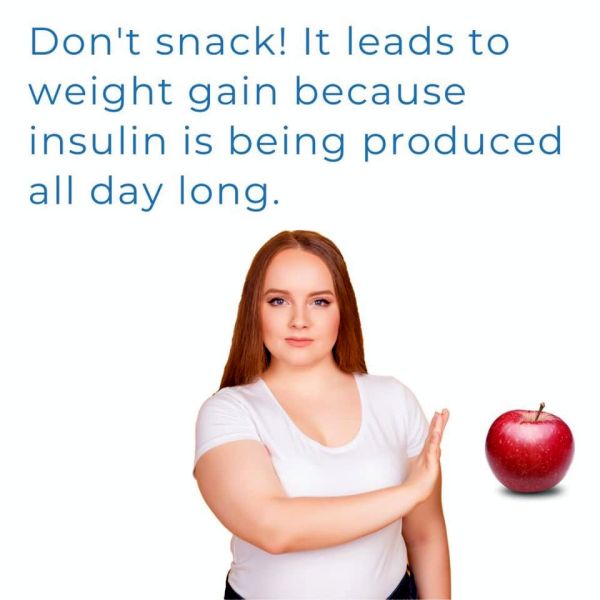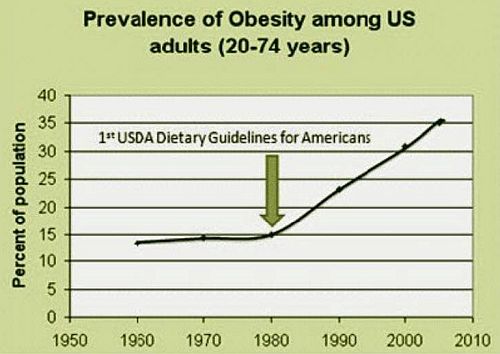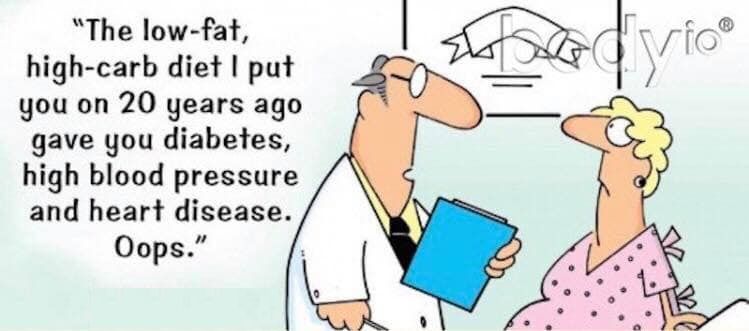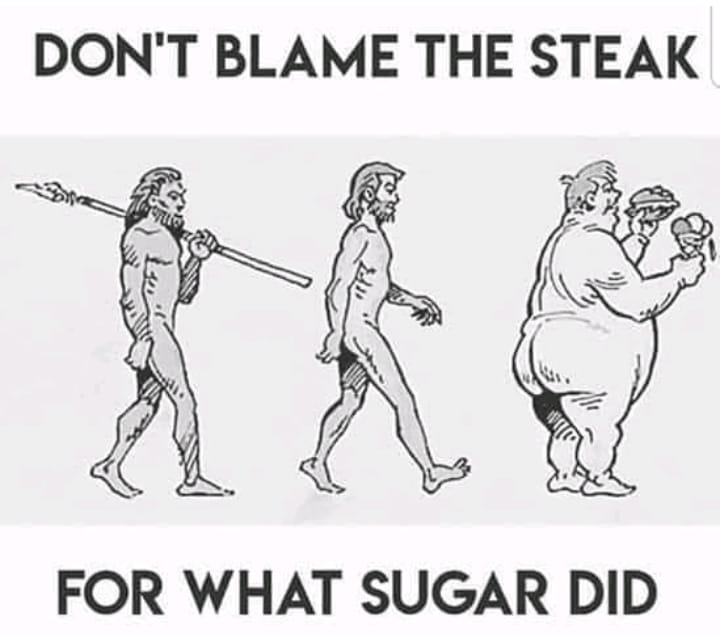
I got great news for you: the system is easy to use, you just need to start, and then your body will appreciate it a lot!
First of all, familiarize yourself with two basic terms:
In fact, every day you indeed spend some time fasting (while sleeping at night + some time before and after). Assuming your regular dinner at 6-7 PM and breakfast at 7-8 AM means that your regular ratio is 13:11 (13 hours fasting and 11 hours eating window). The fasting, which that you used to have up until now, was doing an important job to increase your health, but unfortunately not long enough, as it was interrupted by breakfasts. This fasting was not sufficient to compensate the terrible damage to your body caused by eating many times a day (well, at least that damage was partly compensated somehow; otherwise you would weigh a ton within a few week).
In other words, you need to increase the period of fasting. First, increase its duration by 3 hours to change the ratio to 16:8 (16 hours fasting and 8 hours eating window). It would be an exaggeration to say that this task is hard to accomplish.
Strictly speaking, only the rules 1, 5 and 6 define Intermittent Fasting itself. If you will observe ONLY them, that will already be a revolutionary turn for the better, so your body will thank you. However, careful observance of other rules as well will make your transition to IF much easier, and the process of losing weight will develop fast and efficiently.
Effective tomorrow, here is what you do:
- Eat twice a day. Your first and second meal should be eaten within a 8-hours period.
Note that you must complete the second meal before 8 hours have elapsed, not start.
For me, the most comfortable is the interval between 9 am and 5 pm, but you can choose any other.
Lifehack: If you're afraid that you'll be hungry in the evening, eat a lot of protein at your second meal. Eggs are especially good - they are almost guaranteed to prolong satiety until the end of the day.
8 hours is the maximum allowed length of the eating window. In general, it's better to make it shorter, then more hours will be devoted to fat burning. So, it's better to keep not 16:8, but 17:7 or 18:6. 19:5 and 20:4 are also possible but they are practically undoable since you will not get hungry so soon if you remove carbohydrates (as will be described later).
Let minimum 3 hours (4 are better) between completing the last meal and going to sleep.
If it doesn't work out one day, then wait at least 2 hours before you go to bed. But the daily routine should be an at least 3-hour meal break before bedtime. The point here is not even in the IF (or rather, not only in it). From the book "Fat For Fuel" by Joseph Mercola (PDF):
THE BENEFITS OF AVOIDING EATING HOURS BEFORE YOU GO TO BED
No matter which fasting program you choose, or even if you choose not to adopt any formal type of fasting, you'll want to stop eating at least three hours before you go to bed. I have recently become much more aware of how important this simple change is in helping to optimize your mitochondrial function and prevent cellular damage. Many factors influence why you will reap health benefits if you develop the habit of not eating within three hours of bedtime:
• When you are sleeping, your energy needs are at their lowest, and providing excess fuel at this time will result in the production of excessive amounts of damaging free radicals.
• Sleep is your body's time for detox and repair, and needing to digest a meal during sleep will impair these important processes.
• Nighttime is a common time for your body to use ketones for energy, since glycogen stores are typically depleted within 18 hours (13 hours if you are eating low carb), and eating too close to bedtime can replenish glycogen stores and prevent the body from burning fat for overnight fuel.
• Not eating for at least three hours before bed enables you to extend that period of time without eating food on a daily basis, making Peak Fasting an easy and rewarding way of life.
A review paper published in 2011 provides much of the experimental work supporting the advice to refrain from eating too close to bedtime. The take-home message is clear: since your body uses the least amount of calories when sleeping, you'll want to avoid eating close to bedtime because adding excess fuel at this time will generate excessive free radicals that will damage your tissues, accelerate aging, and contribute to chronic disease.
For this reason, I believe one of the best strategies for reducing mitochondrial free radical production is to limit the amount of fuel you feed your body when it requires the least amount, which is when you are sleeping. That's why I stop eating four to six hours before I go to bed, although a three-hour window is also beneficial and probably more doable for most people.
Any snacks are absolutely prohibited in the fasting phase (and also in the gap between the meals during the eating window).
Even a smallest piece of most healthy food is essentially just another meal that resets the timer for the food digestion / fat burning cycle. In the fasting phase, this will simply stop it. In between the meals, the consequences of a snack will be much less catastrophic, but they will still exist. Explanation without going into details: the biochemical and hormonal picture, say, 2 hours after eating, is very different from that during eating (and immediately after). With a snack, you forcibly replace the second (which should be at this stage of the previous meal's digestion) with the first.
Any drinks with calories and sweeteners are absolutely prohibited in the fasting phase (and in the gap between the meals during the eating window).
These may include, but not limited to, coffee/tea with sugar/milk/cream, juices, any sweet drinks. No lemon juice/slice with water or other allowed drinks. Teas from hibiscus, dog rose and any fruits and berries are forbidden even unsweetened: even though they contain a minimum of sugar, these calories may be enough to raise insulin and stop the fasting since your body will perceive it as another meal. Technically, even unsweetened tea and coffee contain a small number of calories (1-5), but do not be afraid to drink them - in order to break the fast, several dozens calories are needed. Sweeteners are also banned - despite the lack of calories (shocking details coming soon, keep reading!).BTW, there are 137 calories in a 250-milliliter cup of cocoa - this will clearly break fasting.
Drink water (unflavoured carbonated/sparkling is fine!), as well as unsweetened coffee and various plain teas.
Broth is not allowed between your meals because of calories (it's food!).
If your stomach starts churning while you fast, just drink.
You will find more details the first bullet of the TIPS AND TRICKS FOR EASY HUNGER MANAGEMENT section in the page KETOSIS AND HUNGER.Absolutely remove easily digestible ("fast") carbohydrates, and minimize "slow" ones.
This is the most important rule of all the rules listed. If I would be forced to obey only one rule, I would select this. To explain the topic properly, I provided a lot of details, so this paragraph had grown to large size and was extracted to a dedicated page that needs to be carefully studied.- Limit your consumption of dairy products. Ideally, remove them at all. First of all, it's milk itself, as well as cream, yoghurts, kefir, baked milk, sour cream and white soft cheeses (cottage, feta, cream-cheese). In the beginning, if you switched to intermittent fasting and low-carb food, then weight loss usually goes well even with dairy (the change for the better is too revolutionary), but at a later stage, dairy products can be the reason why weight loss stalled. Carbohydrates (lactose is sugar!), a high insulin index, and hormones are involved in that. Butter is ok (although many people prefer to melt it into ghee, which is better). If you eat dairy products anyway, then prefer ones made of not cow, but goat, sheep or buffalo milk.
- Eat more proteins, as they prolong the feeling of satiety and suppress the feeling of hunger.
Due to proteins, you can keep your fasting periods longer even in the beginning of your IF. Meat, fish and eggs are your best friends! - Include fatty food into your ration.
It's extremely important!!! Eat fatty meat and fish, pork lard, bacon (check the ingredients to make sure sugar is not added!), avocado, butter, oil (MCT, olive, coconut, avocado, but NOT soy, corn, sunflower or canola!). Never buy products with a "fat free" or "low fat" label. Buying meat, choose only fatty pieces, no lean meat. No more dry ("dietary") chicken breast in your life!
Fry meat, fish, eggs in fats. Stop trying to fry cutlets on water in non-stick cookware. By the way, fats are not only very healthy, but can also greatly change the taste of a familiar dish. For example, beef steak has a completely different taste if you fry it in lard and add butter at the end.
"But... the official guidelines instruct us to eat as little fatty foods as possible, otherwise we will get fat..."
Have you been following nutrition guidelines and advice for years and STILL gaining weight and becoming unhealthy?!? It’s time for new guidelines. It’s time for us to take back our own health. Huge quantities of grains are urged by the official guidelines, and tiny amounts of fats are encouraged! The Dietary Guidelines for Americans (cnpp.usda.gov) were first released in 1980. I would like to comment the following graph, but what can I add???

Government dietary guidelines are plain wrong: Avoid carbs, not fat


Fortunately, there has been a change for the better in recent years: Low-Carb, High-Fat Is What We Physicians Eat. You Should, Too.
Too good is also bad.
LCHF (low-carb, high-fat diet) means that there should be as few carbohydrates as possible. But it does not mean that there should be as much fats as possible. It just means that fats should not be avoided and should be sufficient.
Note that although fats are very important, it is possible to over-eat them, so you shouldn't consume tons of them. Let me explain why. Ketosis (which is caused by IF combined with a low-carb/high-fat diet) is a condition in which the body uses ketone bodies, which are derived from fats, rather than glucose, as fuel. When the body is deficient in glucose, the liver synthesizes ketone bodies from fat, which are then used by the cells as the primary fuel instead of glucose. Ketosis is not necessarily a condition in which the body uses only its own fats. If you have too much fat in your diet, your body may have enough of it and not burn your fat reserves. So even though the recommended way of eating is high-fat, it is important not to overdo it if you want to lose weight. - Eat your fill, don't cut back on portions. Don't try to eat less than the normal amount of food. Never ever allow a daily caloric deficit!
If you try to eat fewer calories, you will fall into the classic "dietary trap" (slow metabolism and subsequent weight re-gain) - be sure to read that! Remember that there are 9 calories in a gram of fat (and only 4 in a gram of carbohydrates and proteins). This means that eating enough fat is important not only for achieving and maintaining ketosis, but also for avoiding a calorie deficit. If you see that the food is not very fatty, then just add two or three strips of bacon to it. - Put your meal into your mouth by tiny pieces, and chew each of them carefully – until it vanishes.
Why? The mechanism is explained in these very short, but very important videos: 1, 2, 3, 4. For more details, read the book Fletcherism: What It Is; Or, How I Became Young at Sixty, written in 1913 by Horace Fletcher. I started to chew each piece until it totally disappears in the mouth 7 month prior to starting IF and had lost 22 lbs (10 kg) only on that method. So, that has nothing to do with Intermittent Fasting – I just give this advice to everybody, now and again. I rigorously observe this rule, and it is highly probable that my transition to IF was so easy and smooth due to this in particular. Another reason for me to love this method is that it allows me enjoying my meal for a protracted period. I eat only once per day, after all, and chewing long is a good alternative to devouring it all in a few minutes – crunch-munch! (especially because my current portions are small). Therefore, I make the enjoyment longer, as the next time will come only in 24 hours or so! - Do a sleep study to define if you have the obstructive sleep apnea syndrome; if it is detected, immediately start CPAP therapy.
If you are overweight, then it is likely that you also suffer from obstructive sleep apnea syndrome. Please get familiar with the statistics of OSA prevalence in groups of people with different body mass index (source):
- BMI 35-39.9 - 71%
- BMI 40-49.9 - 74%
- BMI 50-59.9 - 77%
- BMI 60 or more - 95%
- Reduce stress. Cortisol interferes with losing weight.
That topic is so important that I dedicated a whole page to it.